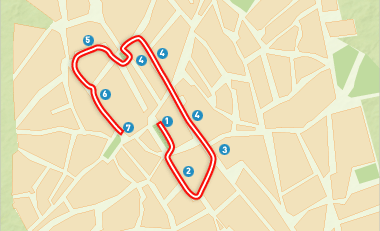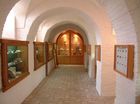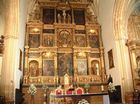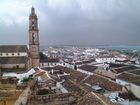
When getting in the historic quarter of Bujalance, the traveler discovers the rests of the Castle-Citadel, an impressive building that testifies the strategic importance of this enclave of Cordoba.
It had seven defense towers from which there still remain three. Together with this fortress we find the parish church of Nuestra Señora de la Asunción, the monumental jewel of Bujalance. Its tower, of 55 meters, is the highest of the province of Cordoba, proportions of the cathedral. The temple is of gothic-renaissance style, raised along the XVI century and which had the intervention of the architects Hernán Ruíz I and II. It has three naves without crossing, separated by arches of ogival style. The interior of the parish is presided by the retable of the major chapel, work of the end of the XVI century. It was set by Guillermo de Orta and finished by Andrés de Castillejo, which shows six painted tables by Leonardo Enríquez de Navarra. From the beginning of the XVIII century we find the retable and hexagonal Lady Chapel of the Virgen del Rosario, placed in the chapel of the Sagrario, one of the most beautiful of the Cordoba’s baroque. The church of San Francisco is another of the most outstanding complexes of Bujalance. Its two facades show the eclosion of the baroque of Andalusia. The tower is another of the most outstanding elements of this parish. The hospital of San Juan de Dios was built in 1609, with a notable monastic courtyard with archeries of brick over columns. From the convent of Santa Teresa, founded in 1708, we must highlight it major retable of polychrome carving wood. The Plaza Mayor of Bujalance is presided by the Town Hall, built in the XVII century, under the reign of Carlos II. When walking through its urban quarter, the traveler discovers its almost half hundred of stately houses, built in the XVII and XVIII centuries.
|




 Ayuntamiento de Bujalance
Ayuntamiento de Bujalance Ayuntamiento de Bujalance
Ayuntamiento de Bujalance




